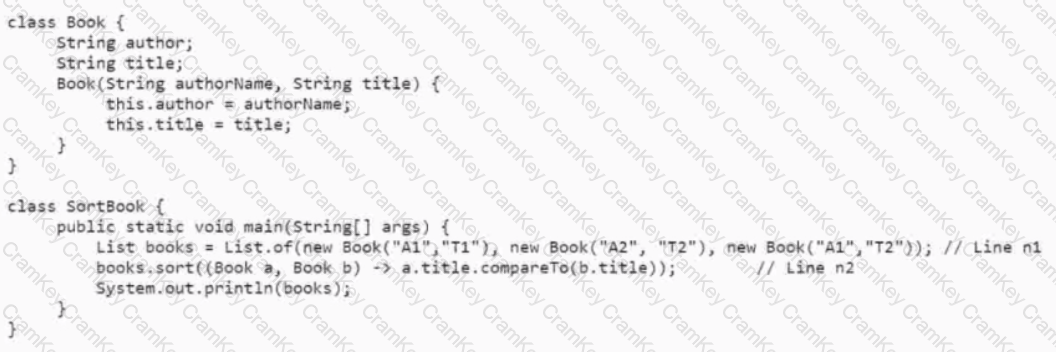Explanation: The answer is C because the code fragment uses a different syntax and logic for the reduce operation than the other options. The reduce method in option C takes a single parameter, which is a BinaryOperator that combines two elements of the stream into one. The method returns an Optional, which may or may not contain a value depending on whether the stream is empty or not. The code fragment then adds 5 to the result of the reduce method, regardless of whether it is present or not. This may cause an exception if the Optional is empty, or produce a different value than the other options if the Optional is not empty.
The other options use a different syntax and logic for the reduce operation. They all take two parameters, which are an identity value and a BinaryOperator that combines an element of the stream with an accumulator. The method returns the final accumulator value, which is equal to the identity value if the stream is empty, or the result of applying the BinaryOperator to all elements of the stream otherwise. The code fragments then add 5 to the result of the reduce method, which will always produce a valid value.
For example, suppose listOfNumbers contains [1, 2, 3]. Then, option A will perform the following steps:
- Initialize accumulator to identity value 5
- Apply BinaryOperator Integer::sum to accumulator and first element: 5 + 1 = 6
- Update accumulator to 6
- Apply BinaryOperator Integer::sum to accumulator and second element: 6 + 2 = 8
- Update accumulator to 8
- Apply BinaryOperator Integer::sum to accumulator and third element: 8 + 3 = 11
- Update accumulator to 11
- Return final accumulator value 11
- Add 5 to final accumulator value: 11 + 5 = 16
Option B will perform the same steps as option A, except using a lambda expression instead of a method reference for the BinaryOperator. Option D will perform the same steps as option A, except using parallelStream instead of stream, which may change the order of applying the BinaryOperator but not the final result. Option E will perform the same steps as option A, except using identity value 0 instead of 5.
Option C, however, will perform the following steps:
- Apply BinaryOperator Integer::sum to first and second element: 1 + 2 = 3
- Apply BinaryOperator Integer::sum to previous result and third element: 3 + 3 = 6
- Return Optional containing final result value 6
- Add 5 to Optional value: Optional.of(6) + 5 = Optional.of(11)
As you can see, option C produces a different value than the other options, and also uses a different syntax and logic for the reduce operation. References:
- Oracle Certified Professional: Java SE 17 Developer
- Java SE 17 Developer
- OCP Oracle Certified Professional Java SE 17 Developer Study Guide
- Guide to Stream.reduce()
